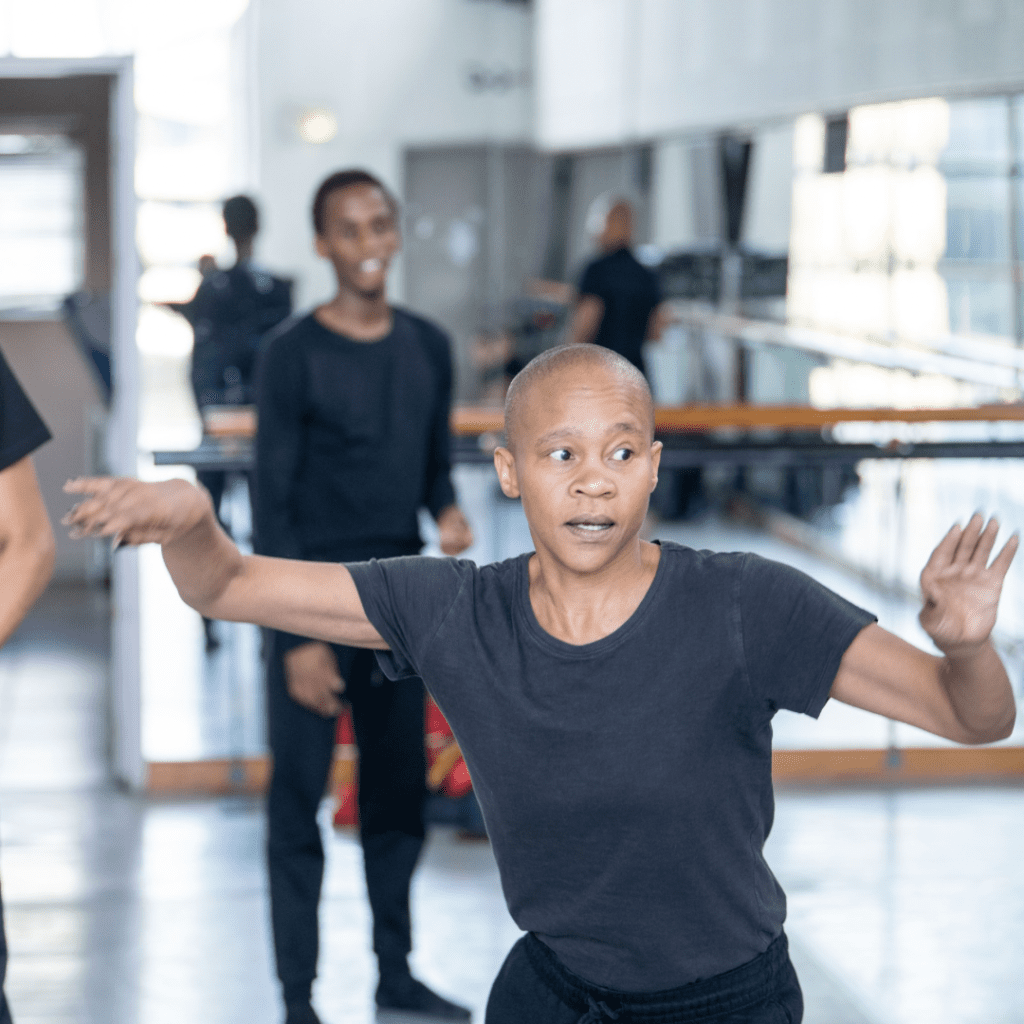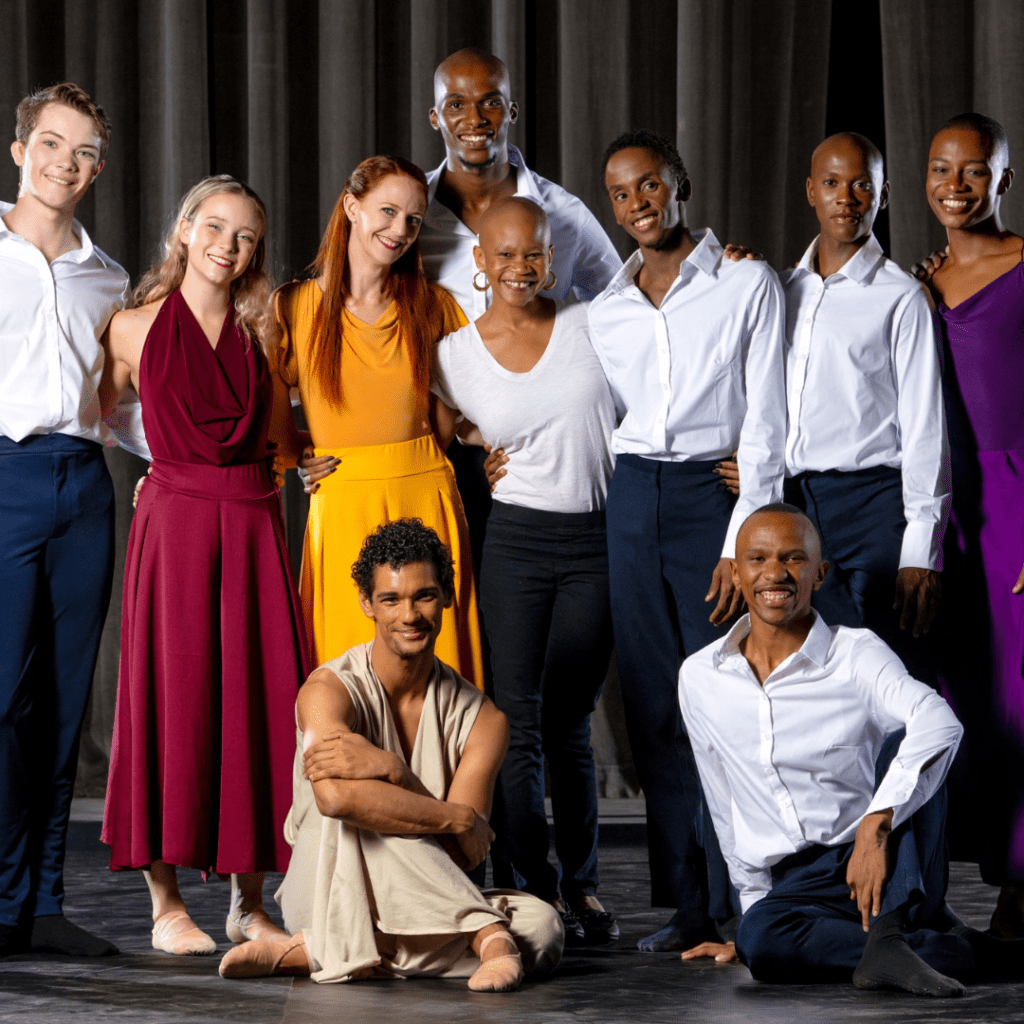

It was with heavy hearts that we learned of the passing of internationally acclaimed South African choreographer and dancer, Dada Masilo at the end of last year. The artist died at the age of 39 on 29 December 2024 after a brief, yet unexpected illness and South Africa mourns the loss of this Soweto-born, energetic soul who merged African motifs with classical European choreographies. Masilo specialised in reinventing classical ballets and pioneering contemporary dance compositions.
She received countless awards for her work, including:
– Most Promising Female Dance In Contemporary Style by Gauteng’s Department of Arts and Culture
– Standard Bank’s Young Artist Award For Dance
– Netherlands’ Prince Claus Next Generation Award
– Positano Léonide Massine Lifetime Achievement Award
– One of 44 Top Artistic Icons in the City Of Gold where her name is embedded within a star on the wall of the Soweto Theatre.
To honour her memory, we decided to revisit some of her best works in dance – each encompassing visual representation of universal emotions.
Masilo’s first classical remastering was Romeo and Juliet in 2008. It premiered to sold-out audiences at the National Arts Festival in Grahamstown. From there, it moved to Arts Alive International Festival in Johannesburg.
The age-old themes of love, death and reconciliation were explored in a modern context in her contemporary take on this classical ballet. Dancing the role of Juliet, Masilo injected a personality into her character who was no longer just a love-sick girl, but a curious young woman questioning the meaning of life, love and death.
It was this work that won Masilo the Standard Bank Young Artist Award for Dance in 2008.
Next on her hit list was Carmen in 2009. She fused contemporary dance with Flamenco in her take on this iconic ballet. Her take on Carmen undermined the myth of death being the only way of achieving freedom and independence from José, Carmen’s obsessed stalker. Masilo’s ending saw José dying, instead of Carmen.
Her fusion of African dance with Flamenco and ballet was not a happy marriage, she said, but she liked the unpredictable. She danced it barefoot, saying: “In terms of costumes, I didn’t want to use the conventional Spanish dance costumes as they are a bit too heavy, especially for floor work. But I definitely wanted the flow and movement in the costumes, and the roses on the heads (even though I do not have hair!)”
The themes of gender-based violence came through in her choreography of Carmen. In fact, she wanted society to focus more of their attention on rape and violence against women.
In 2010, Masilo re-envisioned the story and characters of Swan Lake. In it, she fused contemporary dance, ballet and African dance, which led to a Bessie Award nomination in 2016.
Masilo used Swan Lake to open up conversation about issues like homophobia and domestic violence, because those are realities at home for many. In this remastered work, she broke gender stereotypes. Odette was forced to marry Prince Siegfried, who was secretly in love with male swan, Odile. Through this twist to the original, Masilo interrogated the social issue of HIV/AIDS in South Africa.
Her black Prince Siegfried was encouraged by Odile to follow his instincts despite societal pressures and ideologies. Essentially, gender, race and sexuality were at the forefront of this work, with Tchaikovsky and Zulu melodies blended together.
Masilo’s Giselle emerged against the backdrop of a South African village. The character was a peasant girl, rejected by her lover and dying of heartbreak. Finally, she returned as a supernatural being looking for revenge.
Masilo once again fused ballet, contemporary and traditional Tswana dance on stage for this production. In it, she danced to classical strings with African percussion and voice, with the original narrative followed, but completely modernised.
In her version of Giselle, she moved away from unrequited and impossible love between two people from different social classes. Instead, it was a choice of rejection and betrayal by Albrecht towards Giselle.
The Wilis – the ghosts who return from the grave to haunt the living – were reimagined. Instead of dying from exhaustion as they are forced to never stop dancing, they were beaten to death. The Wilis queen was also characterised as a sangoma – a traditional African healer that talks to ancestors – in Masilo’s version of this classic.
Inspired by Pina Bausch’s The Rite of Spring, Masilo choreographed The Sacrifice which premiered in London in 2021. In this production, themes of sacrifice within ritual ceremonies were explored through contemporary and Tswana dance.
The narrative of the original work was followed: A community deciding to sacrifice and kill a woman for the greater good of society. However, the story was now told from an African perspective. At the time of this production, Masilo said the work was “fulfilling and close to [her] heart because [she was] Tswana.”
The idea of a community was established first in Masilo’s work. The dancers on stage interacted with each other in a joyful celebration of Ubuntu, a South African saying which means ‘we are who we are because of others.’ With a tragic twist, the production’s religious sacrificial ceremony began with bare-chested Masilo as the chosen one. Instead of dancing herself to death, though, her character died in the embrace of a maternal figure.
Masilo wanted to portray what sacrifice meant to the Tswana people then, and what it meant at the time of the production. She said that she wanted to create a story that was deeper than a chosen maiden dancing herself to death. For her, sacrifice was not a choice, but a fate. While the acceptance of ritual sacrifice in the natural world was portrayed in the production, Masilo showcased the struggle towards that acceptance too.
In 2024, Masilo choreographed the world premiere of Salomé for Joburg Ballet. This classical and contemporary work was based off Oscar Wilde’s tragic play by the same name. Interestingly, Masilo told Joburg Ballet: “I don’t work on pointe,” and so, a new era of ballet was formed.
She said “ballet is held and controlled,” explaining that she worked with “this thing called snake, where you move the body like a snake in a good mood. Just to get that looseness and freedom of movement.”
She used the biblical characters from Salomé to interrogate the ugly side of desire, seduction, passion and power dynamics. This vocal, visceral and extremely complicated dance formed part of SCARCITY – the creation of four new contemporary ballets that encouraged conversation around memory, identity and self.

At the time of her death, Masilo was working on a reinvention of Hamlet, as well as an untitled solo piece about the loss of a loved one. The irony of this is not lost on us and while we hope her family finds peace, one thing is certain: The world of dance will never forget Dada Masilo.
For more arts and culture articles, click here.
Read our Holiday Edition Magazine.
Follow us on Instagram.
Stay up-to-date on the hottest, hippest and most happening things to do in Mzansi!
